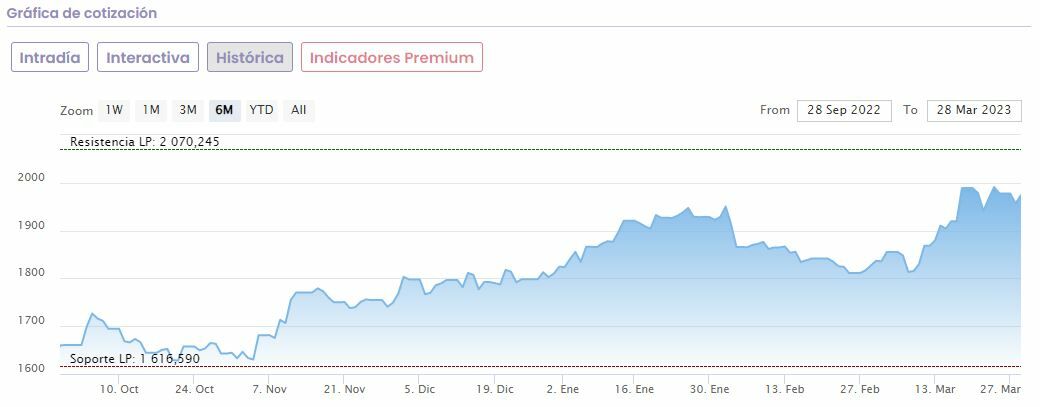Spot gold prices fell 0.29% to $1,984 an ounce on Wednesday, staying afloat after falling sharply earlier in the week. “Risk appetite has improved and yields are rising, so naturally gold is giving up some of the gains built up by the bank run in recent weeks,” he notes. Craig Erlam, OANDA Market Analyst. Still, “it’s not trading too far above $2,000, apparently a major psychological hurdle, and it’s a long way from its recent lows.”
For Erlam, the current situation suggests that investors “either don’t believe the mini-banking crisis is behind us or, perhaps more likely, that their scars on credit markets have durably reduced the need for bank tightening.” “That could be bullish if so for gold and Traders might even be eyeing all-time highs if the rate cuts come true this year.”

Warren Patterson, ING analystbelieves that “after the recent events in the banking sector we are not on the brink of another financial crisis”, but that “recent events indicate that the Federal Reserve does not need to tighten its monetary policy any further: it seems so Interest rates are already in restrictive territory“.
The Dutch banking expert believes that the Federal Reserve’s policy will be decisive for gold in the medium term. “The Fed is likely nearing a peak in the federal funds rate, and we could see a reversal in the second half of this year,” Patterson says. “We expect real yields to continue falling relative to interest rates throughout the year, which should support gold prices.”.
“While we expect prices to decline in the short-term, we expect gold prices to increase in the second half of 2023 and the gold price to average $2,000/oz in the fourth quarter.” that we do not see any further deterioration in the banking sector and that the Fed will start cutting interest rates towards the end of this year,” concludes the ING expert.